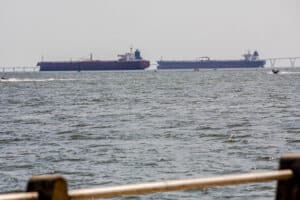Defence Minister Angie Motshekga is in Russia for V-Day celebrations while SANDF troops leave Goma to begin their journey home.

Minister of Defence Angie Motshekga has been rebuked for her trip to Russia.
The minister skipped a joint standing committee on defence briefing on 9 May in order to attend World War II Victory Day celebrations in Russia.
The briefing was held for the Department of Defence (DoD) to explain the withdrawal of troops from the Democratic Republic of Congo (DRC), an operation which began in late April.
Minister Motshekga excused
Committee chairperson Malusi Gigaba excused the minister, relaying that her apology said that the ANC had deployed her to Russia.
Committee members suggested postponing the meeting due to Motshekga’s absence, with many expressing their frustration that the minister would not be present for an important briefing.
Deputy Minister of Defence Bantu Holomisa attended in Motshekga’s absence, with Gigaba defending the minister’s trip to Russia.
“It is not just about the celebration, there are diplomatic issues involved,” Gigaba said.
“There are diplomatic relations involved between countries and I think we need to respect that we are not privy to the reason why the president deployed the minister to Russia,” he elaborated.
SADC and M23 leadership meet
The briefing proceeded, with Holomisa and DoD chief financial officer Edem Abotsi explaining the withdrawal from DRC was being managed by the South African Development Community (SADC).
The force needing to be withdrawn from the DRC includes a South African battalion of 700 soldiers, 137 members of the helicopter unit, 24 tactical intelligence soldiers and 250 members of a quick reaction force.
Other SADC forces include troops from Malawi and Tanzania who joined the South African National Defence Force (SANDF) members in supporting Congolese troops with peacekeeping efforts.
SANDF officials explained on Friday that SADC leadership had met with the M23 rebels leadership face to face to negotiate the withdrawal.
“The engagements came out with concrete agreements and commitments by both parties to create appropriate conditions for a safe and secure withdrawal,” said Abotsi.
SANDF withdrawal plans
The SANDF said an air withdrawal was considered preferable but explained that Goma airport was not a suitable point of departure.
Withdrawal by road became the second option, with the most navigable route leading from Goma, through Rwanda and into Tanzania.
Rwanda was engaged and after an agreement was reached, ground reconnaissance of the route was conducted with a view to leaving Tanzania by air or sea.
As of 28 April, an advanced convoy consisting of SANDF, Malawian and Tanzanian troops had begun establishing a transit camp in Tanzanian territory.
A second convoy departed Goma on 2 May and is believed to have arrived safely in Tanzania on 7 May
A third convey left Goma on Friday and several more convoys are due to leave on dates throughout the coming week.
Limited info due to operational security
The DA’s Chris Hattingh asked why Goma airport could not be used, as well as what would happen to damaged helicopters and equipment left at the airport.
The department said it could not discuss matters relating to the equipment left behind or other operational matters for security reasons.
Hattingh disagreed with the information possibly compromising operational security and expressed his belief that the department was not sharing all the relevant info it had on the withdrawal.
Other committee members wanted to know the cost of the withdrawal, but Holomisa stated that as a SADC mission, much of the cost and responsibility of the withdrawal lay with the regional body.
It has now been five months since SANDF troops were killed in battle and Abotsi shared his thoughts on the soldiers’ morale.
“I don’t want to say it’s high, but I want to say it’s good,” said Abotsi, relaying sentiment expressed by soldiers who had returned home earlier in the year.
Next SANDF engagement
South Africa’s next military involvement is the extension of Operation Copper, a SADC strategy to fight pirates along Africa’s east coast.
“Over the past few years, maritime piracy has migrated from the Somali water down south to the Mozambican channel,” the SANDF stated on Friday.
“South Africa and other countries have noted with concern that the scourge of piracy is extending towards Southern Africa. Maritime piracy remains a threat to all countries sharing sea borders in the Indian Ocean,” it added.
President Cyril Ramaphosa has approved Operation Copper involvement from 1 April 2025 to 31 March 2026.
South Africa will deploy 200 personnel during the 12 month contract at a total cost of R61 million.
NOW READ: SANDF in DRC: Trump administration did what SA couldn’t, says DA






